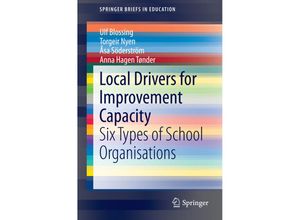This book presents systematically six types of schools with different improvement capacities.
Different schools have different capacities for school improvement depending on the school
infrastructure norms and routines for the improvement process improvement roles and
improvement history. The organisation of the improvement capacity is understood on the basis of
sensemaking processes among teachers and school leaders. The book focuses on the challenges for
each type of school in their improvement work and which situations and circumstances they need
to take into account. The school types are illustrated with detailed descriptions of six
schools coming from an evaluation of a Norwegian school development program. The book fills a
need in school organisations to have concrete illustrations from similar schools of how teacher
teams are organised how leadership is exercised and processes are organised in their efforts
of improving the organisation and building a complex and effective capacity. Schools'
improvement capacity has become an important feature in school management and leadership as
well as in research as western states have decentralised governance to the local level. The
expectations on school leaders as well as on teachers are high when it comes to improve their
schools to raise student outcome. Accounts of professional school cultures and professional
learning communities often describe in an overall perspective the ideal school where such an
improvement capacity is in work. However accounts of the many ways of organising the capacity
which perhaps are not all in all ideal or effective also contribute to the knowledge of the
local school process.

